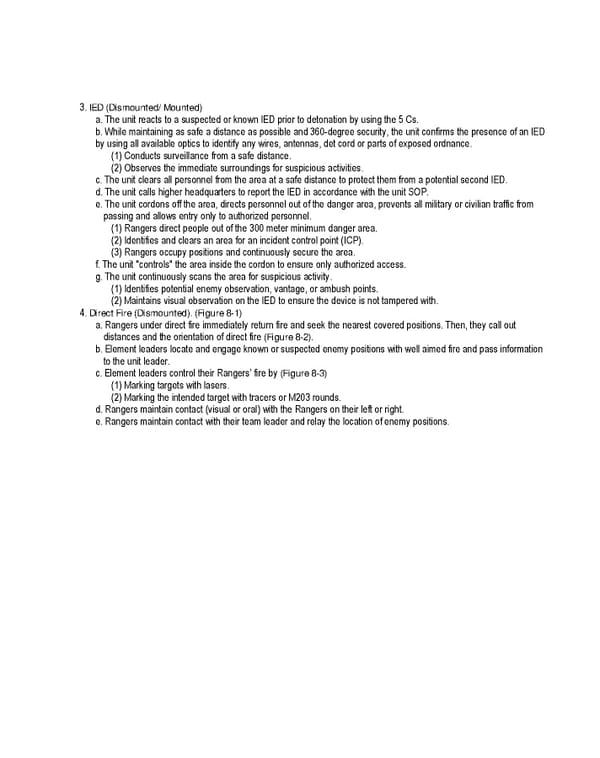3. IED (Dismounted/ Mounted) a. The unit reacts to a suspected or known IED prior to detonation by using the 5 Cs. b. While maintaining as safe a distance as possible and 360-degree security, the unit confirms the presence of an IED by using all available optics to identify any wires, antennas, det cord or parts of exposed ordnance. (1) Conducts surveillance from a safe distance. (2) Observes the immediate surroundings for suspicious activities. c. The unit clears all personnel from the area at a safe distance to protect them from a potential second IED. d. The unit calls higher headquarters to report the IED in accordance with the unit SOP. e. The unit cordons off the area, directs personnel out of the danger area, prevents all military or civilian traffic from passing and allows entry only to authorized personnel. (1) Rangers direct people out of the 300 meter minimum danger area. (2) Identifies and clears an area for an incident control point (ICP). (3) Rangers occupy positions and continuously secure the area. f. The unit "controls" the area inside the cordon to ensure only authorized access. g. The unit continuously scans the area for suspicious activity. (1) Identifies potential enemy observation, vantage, or ambush points. (2) Maintains visual observation on the IED to ensure the device is not tampered with. 4. Direct Fire (Dismounted). (Figure 8-1) a. Rangers under direct fire immediately return fire and seek the nearest covered positions. Then, they call out distances and the orientation of direct fire (Figure 8-2). b. Element leaders locate and engage known or suspected enemy positions with well aimed fire and pass information to the unit leader. c. Element leaders control their Rangers’ fire by (Figure 8-3) (1) Marking targets with lasers. (2) Marking the intended target with tracers or M203 rounds. d. Rangers maintain contact (visual or oral) with the Rangers on their left or right. e. Rangers maintain contact with their team leader and relay the location of enemy positions.
 Ranger Handbook Page 139 Page 141
Ranger Handbook Page 139 Page 141